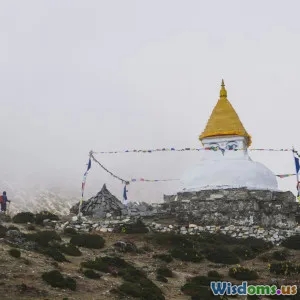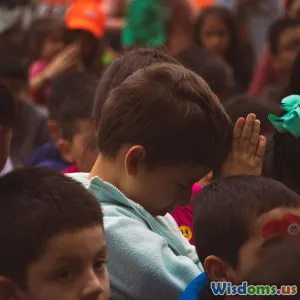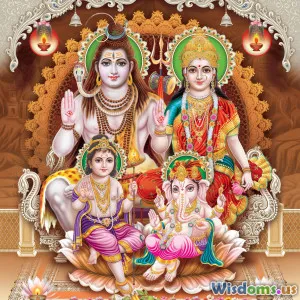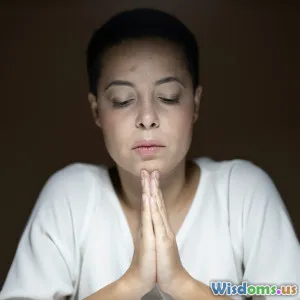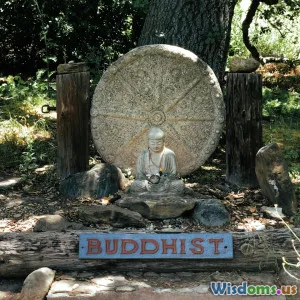
Hidden Symbols in Buddhist Monasteries You Never Noticed
19 min read Explore overlooked symbols in Buddhist monasteries and their hidden meanings, revealing centuries-old traditions and artistic symbolism seldom noticed by visitors. (0 Reviews)
Hidden Symbols in Buddhist Monasteries You Never Noticed
Buddhist monasteries are not only places of serene devotion and scholarly pursuit—they are also intricate tapestries of symbols, art, and architecture. While visitors might notice ornate murals and statues, few realize how many hidden messages are skillfully interwoven throughout these sacred sites. Each corner, pathway, and brushstroke is steeped in meaning, patiently transmitting Buddhist philosophy to anyone patient and perceptive enough to unravel it. Let’s peel back the layers and decode these often-overlooked symbols, enhancing your next monastery visit or virtual exploration with deeper understanding.
Guardians at the Gate: Protective Deities
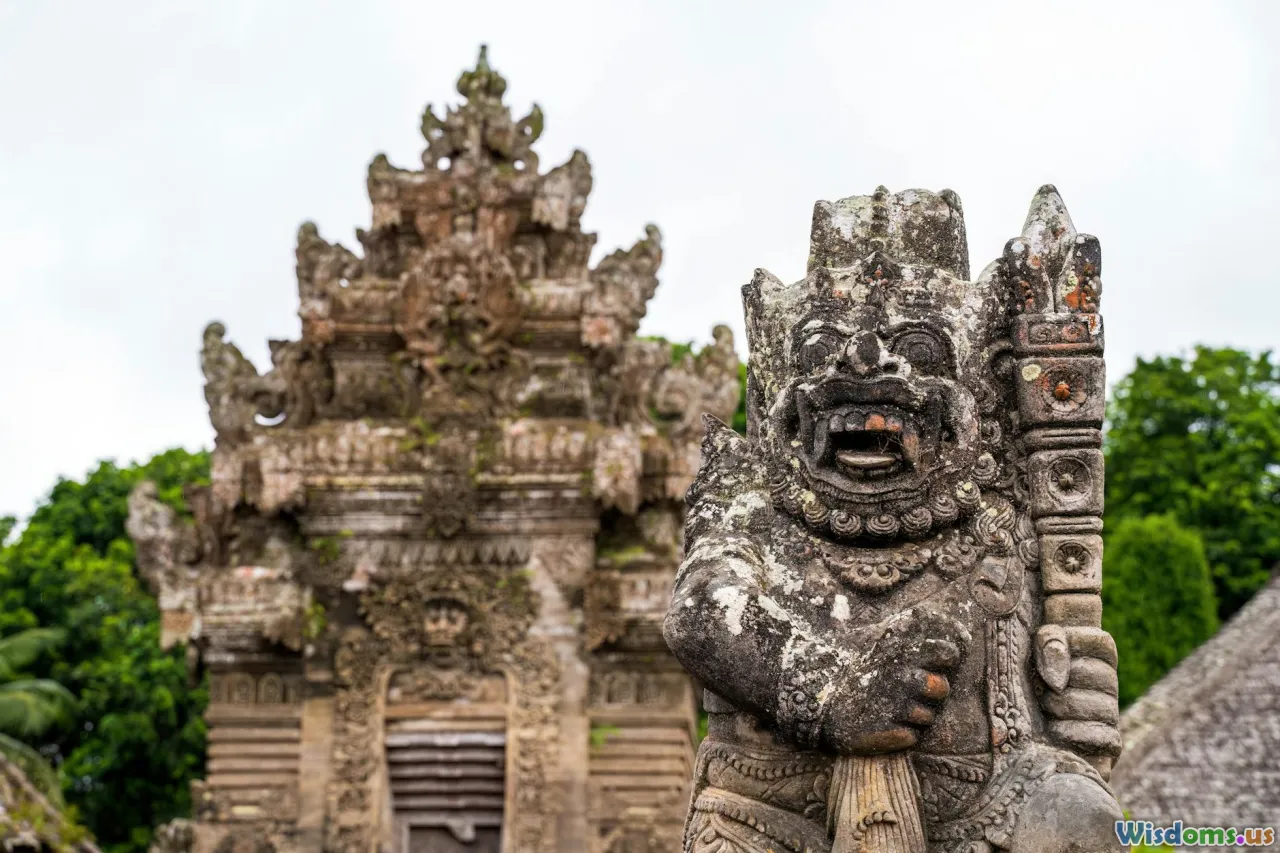
Monastic entryways are more than points of access—they’re powerful thresholds watched by fearsome protectors. In Tibetan and Himalayan monasteries, you’ll spot fierce statues or reliefs of dharmapalas ("protectors of the dharma") or stone lions flanking the gates. Far from just decorative, these figures serve as spiritual bouncers, standing guard against negativity and ignorance.
For example, the iconic Yamantaka—a wrathful, buffalo-headed deity—commonly appears at doorways. He might appear ferocious, but his intent is benevolent: scaring off evil and symbolizing mastery over death. Similarly, the lion dogs (shishi or snow lions) in Chinese, Mongolian, and Nepalese monasteries, represent strength, fearlessness, and the supremacy of the Buddha.
Take a closer look the next time you are near the entry—sometimes, a subtle foot posture or a held object (like a vajra or skull cup) provides clues about the specific guardian and their protective qualities.
The Eight Auspicious Symbols: Layered Meanings in Simple Designs
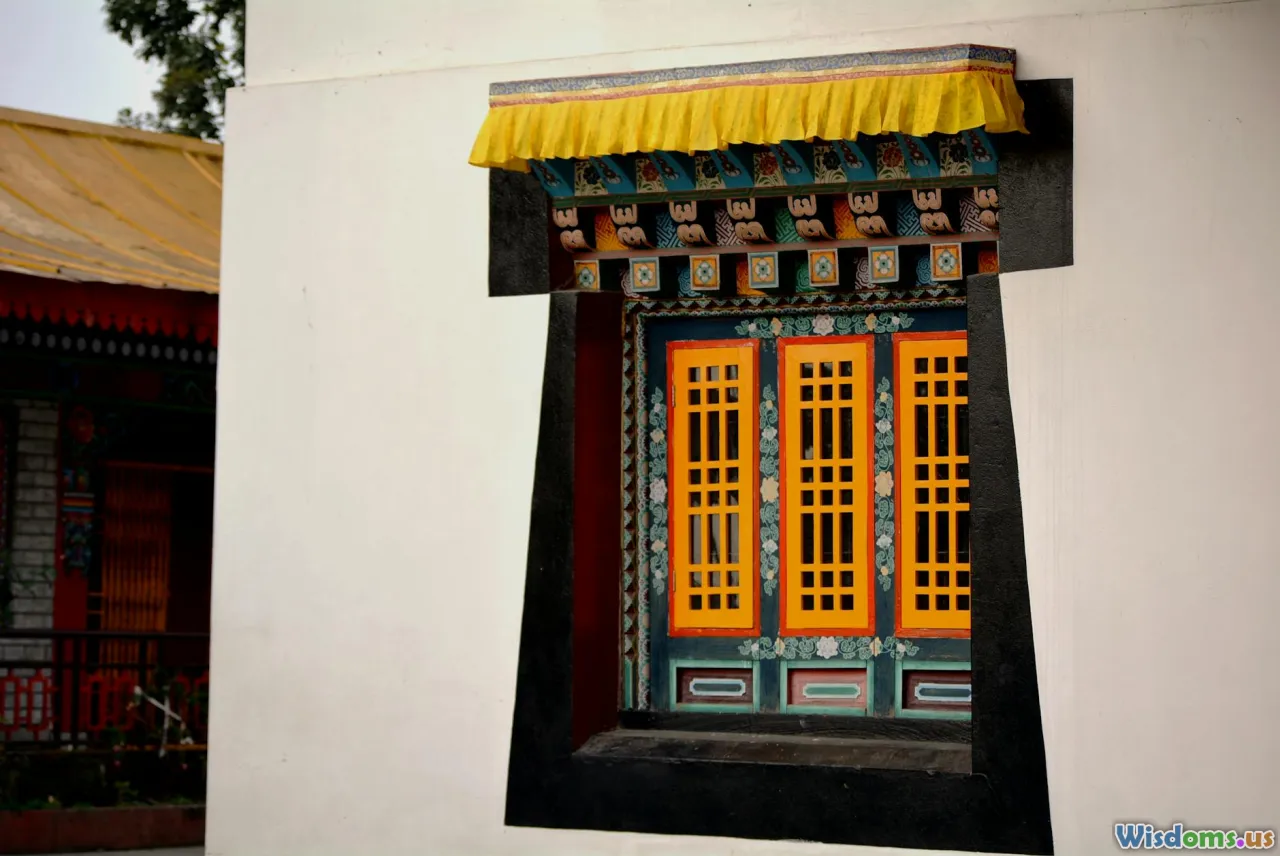
One of the most recurring motifs in Buddhist monasteries is the ashtamangala, or the Eight Auspicious Symbols. Each symbol encapsulates a key aspect of the path to enlightenment, and together, they form a coded map for aspirants.
Brief Overview of the Eight:
- The Parasol (chhatra): Protection from harmful forces, both physical and spiritual.
- The Golden Fish (suvarnamatsya): Freedom and happiness, likened to fish not bound by water.
- The Conch Shell (shankha): Proclaiming the teachings, awakening beings from ignorance.
- The Lotus (padma): Purity of heart and mind, blossoming above muddy water.
- The Banner of Victory (dhvaja): Triumph over negative forces and spiritual obstacles.
- The Vase (kalasha): Treasure of spiritual wealth and fulfilled aspirations.
- The Dharma Wheel (dharmachakra): The Buddha’s teachings and the wheel of law.
- The Endless Knot (shrivatsa): The interconnectedness of all things.
In some monasteries, you’ll find the Eight Auspicious Symbols subtly embedded into murals, altar coverings, or even in the patterns of roof tiles. At Bhutan’s Paro Taktsang, for instance, the main altar cloth displays embroidered versions, while at Nepal’s Swayambhunath Stupa, the whole stupa’s base is ringed with these symbols, inviting merit for those who recognize them.
Secret Geometry: Mandalas as Doorways
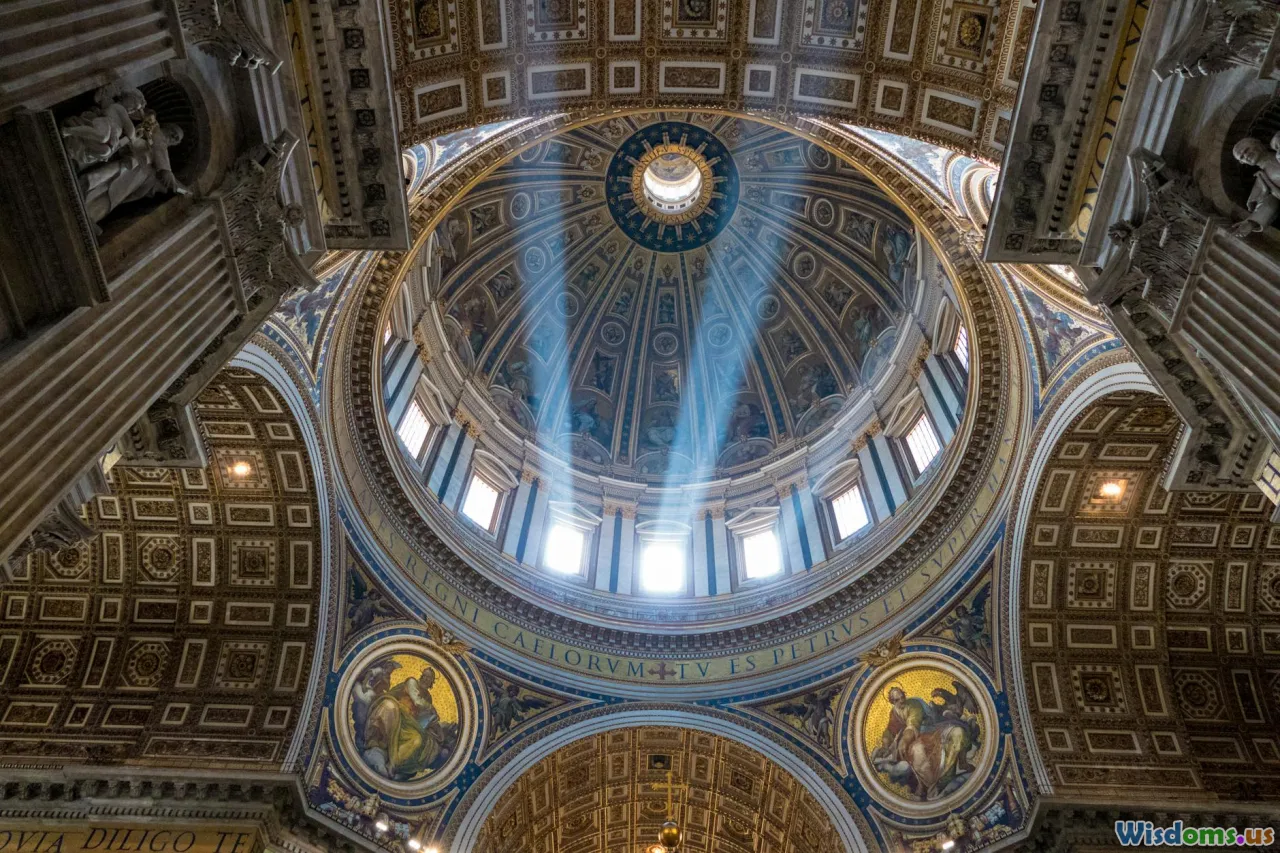
Far from mere attractive designs, mandalas are meticulous, sacred diagrams designed for spiritual awakening. These geometric patterns—radiating from a center and containing intricate forms—serve as meditation guides and cosmic maps.
Many monastery ceilings, walls, and thangkas (scroll paintings) feature elaborate mandalas. To the untrained eye, these may seem like complex or abstract art, but in Tibetan Buddhism, every line, color, and form is charged with meaning:
- The Center often depicts the residence of a key deity (like Avalokiteshvara or Vajrayogini), encapsulating the heart of the universe.
- Four Gates represent the cardinal directions and four boundless qualities: loving-kindness, compassion, joy, and equanimity.
- Outer Layers typically symbolize stages of realization or the purification of elements.
At Ganden Monastery in Tibet, the main assembly hall ceiling glitters with a mandala inlaid with turquoise and coral. While casual visitors might just see elegant patterning, monks use this floor mandala as a visual focus for group initiation rituals.
Color Codes: Symbolism in the Monastic Palette
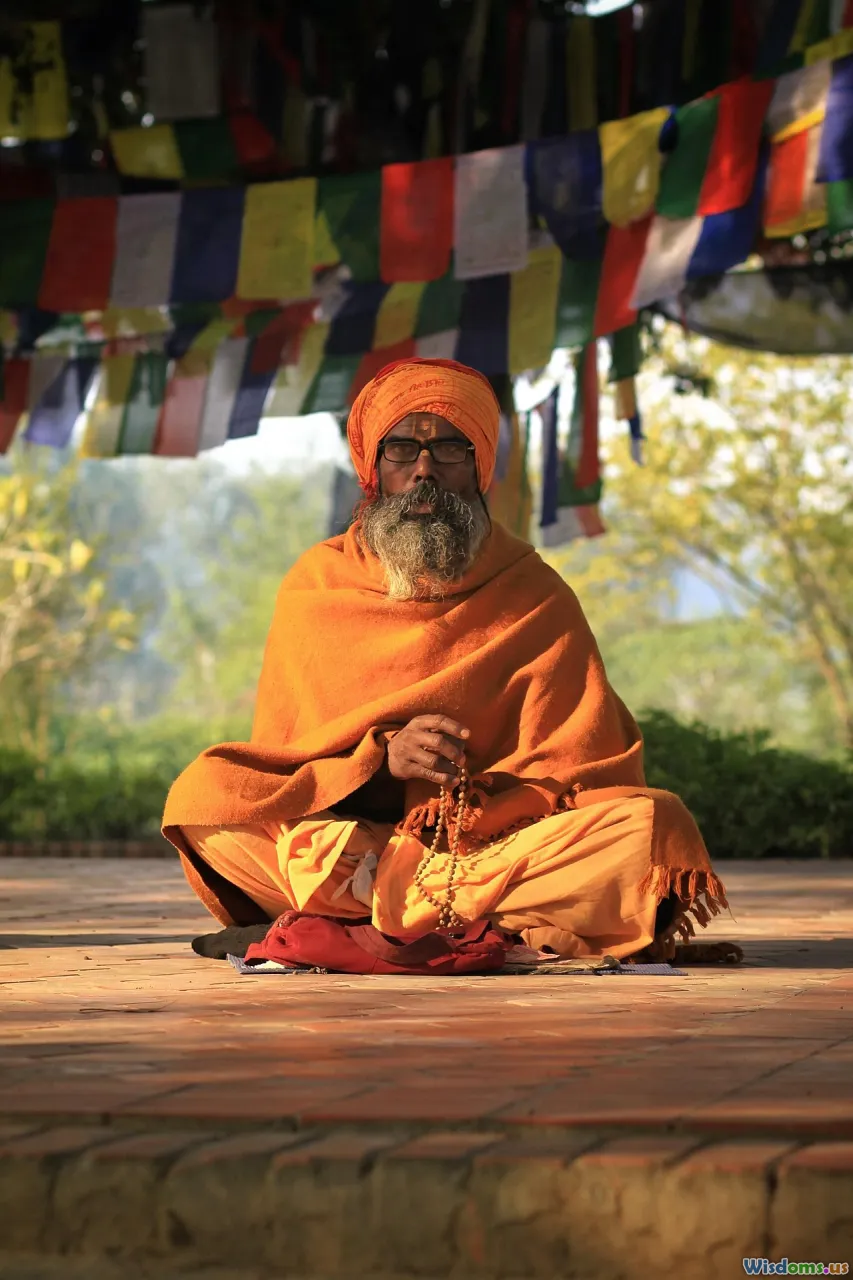
Why do we see radiant reds, golds, blues, and emeralds throughout monastic halls and garb? In Buddhism, color isn’t just for visual appeal—each hue carries profound symbolic weight and practical ritual purpose.
Examples:
- Red: Ubiquitous in Tibetan monastic robes, pillars, and door frames, red stands for power, fire, and the transformation of desire.
- Yellow/Gold: Representing purity, enlightenment, and the wisdom of the Buddhas. Golden roofs (as seen at the Potala Palace or Mahabodhi Temple) attract sunlight, reminding practitioners of the “light of wisdom.”
- Blue: Evoke tranquility and healing, linking to Akshobhya Buddha and vast sky-like awareness.
- Green: Symbolizes balance, action, and auspicious growth. The Green Tara statues found in secluded shrine rooms serve as potent reminders.
Elsewhere, color combinations appear on the ever-present prayer flags—blue for sky, white for air, red for fire, green for water, and yellow for earth. These hues, when fluttering from the terrace of Nepal’s Tengboche Monastery, merge spiritual symbolism with daily life, believed to carry prayers on the wind.
Footprints, Swastikas, and Circles Underfoot
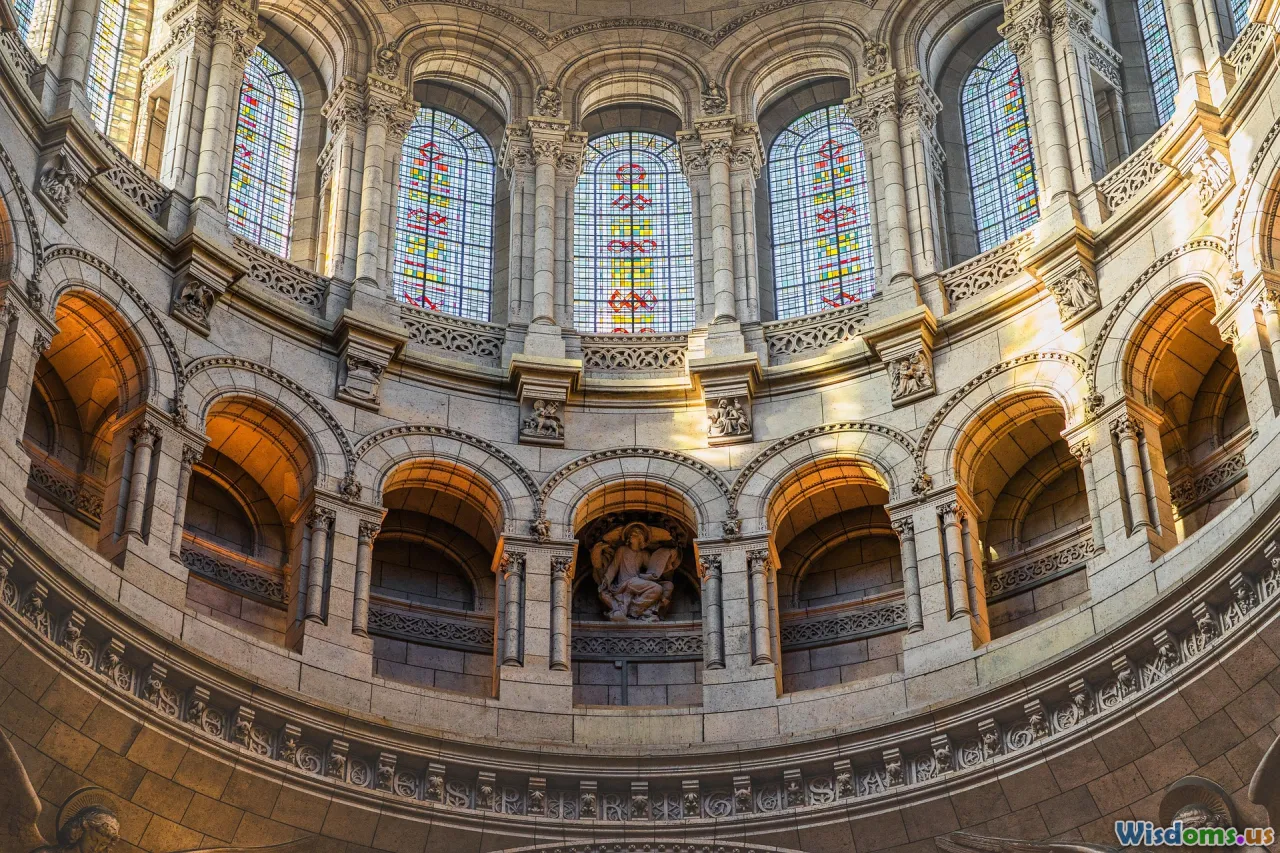
Look down as you move through a monastery’s courtyards and walkways. Underfoot, you might locate subtle engravings, tile mosaics, or painted footprints.
- Buddha’s Footprints (Buddhapada): Cemented at the entrance of Thailand’s Wat Phra Phutthabat, the imprints represent the Buddha’s journey and his grounding of the divine in the earth. Devotees touch or walk around these with reverence, believing they generate auspicious energy.
- Swastika Symbols: Long before being co-opted in the 20th century, the swastika was (and remains) a powerful good fortune motif in Buddhist, Hindu, and Jain traditions. In monasteries from India to Japan, you’ll see carved swastikas on pillars, ceilings, or even ancient floor tiles, signifying auspiciousness and the perpetual turning of the Dharma Wheel.
- Circles and Spirals: Representing samsara (cycle of birth and rebirth) and the path to enlightenment, these motifs are common underfoot, guiding pilgrims on ritual circumambulations (kora), especially in Himalayan gompas.
Cloaked Messages: Iconography of Monastic Statues
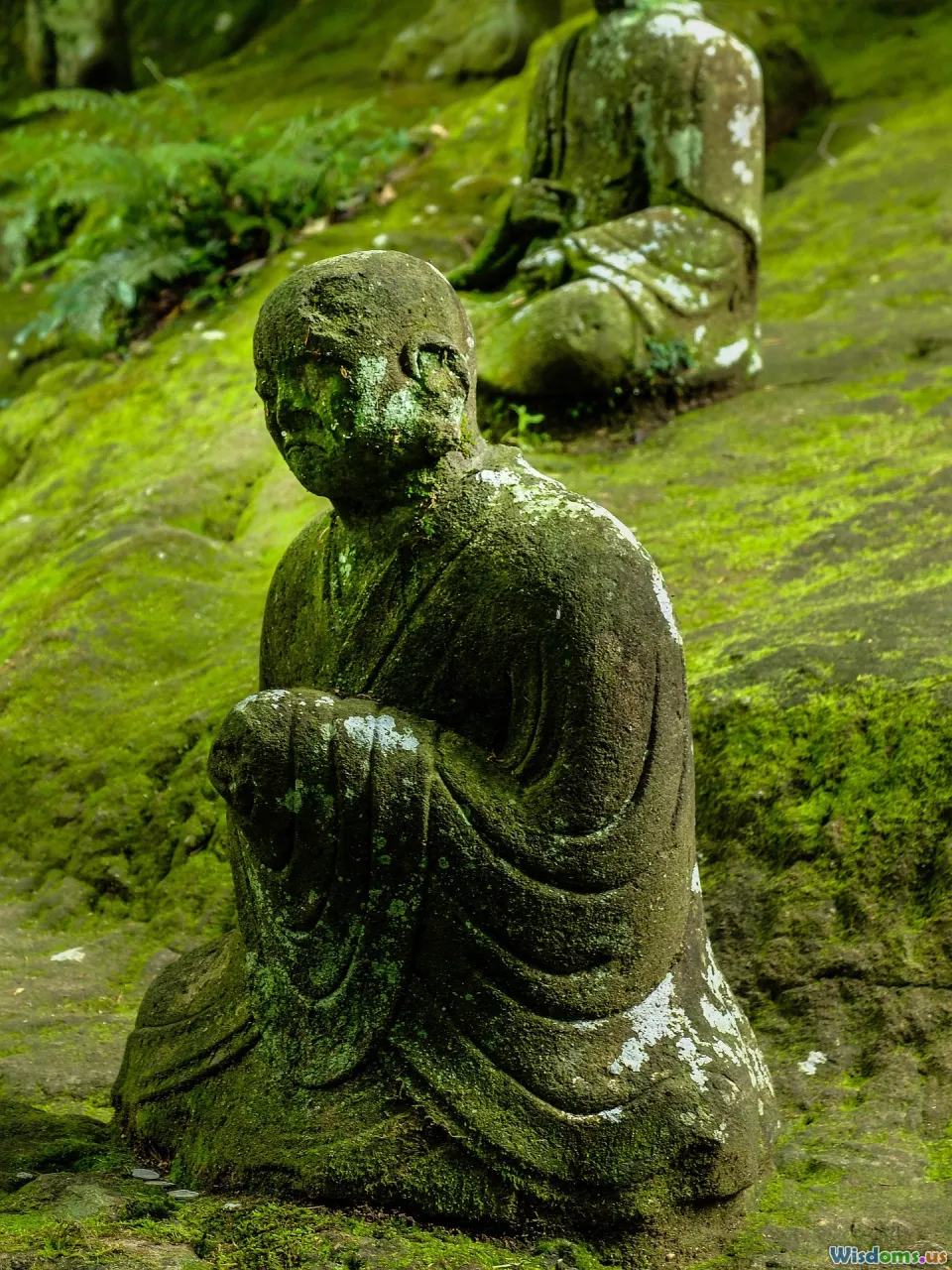
While giant statues of the Buddha attract the most attention, subtler layers of symbolism are embedded in their postures, hand gestures (mudras), and adornments.
Examples of Symbolic Mudras and Postures:
- Earth-Touching Mudra: The right hand reaching toward the ground (Bhumisparsha Mudra) commemorates the Buddha’s enlightenment moment, affirming the earth as witness.
- Teaching/Gesture of Argumentation: Thumb and index finger forming a circle (Vitarka Mudra) signifies the transmission of dharma, commonly found in monasteries such as Nalanda.
- Varada Mudra: The open palm, facing downward, embodies charity, compassion, and the granting of wishes.
Other details matter too—a statue crowned with a five-leaf diadem might reference the Five Wisdom Tathagatas, while a small stupa embedded in the statue’s chest refers to the spirit of awakening (bodhicitta).
In Bhutan’s Punakha Dzong, for instance, overlooking the altar sits a Buddha whose robe subtly forms the shape of a lotus. This reinforces his born-from-purity symbolism even when viewed from behind, a clever bit of artistic encoding that quietly rewards observant visitors.
Scripts and Inscriptions: The Power of Sacred Language
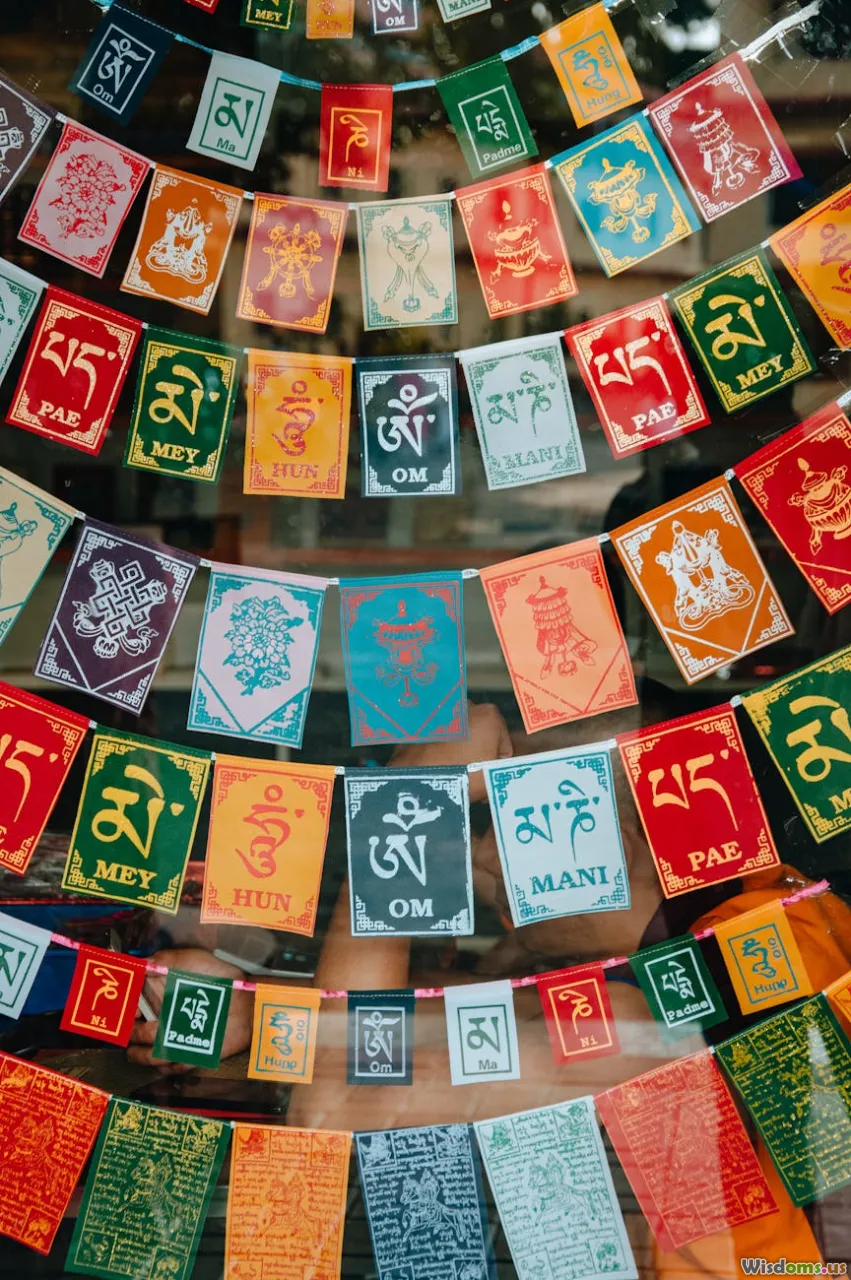
Every monastery is awash in text—sometimes visible, often tucked away in hidden corners or integrated into murals and statuary. These inscribed texts aren’t just devotional: they serve as spiritual vibrational emitters and subtle teaching tools.
- Om Mani Padme Hum: The six-syllable mantra (chiseled on mani stones, prayer wheels, banners) is believed to invoke the blessings of Chenrezig (Avalokiteshvara) with every spin or recitation.
- Calligraphic Circles: Tibetan lamas sometimes scribe mantras in spirals or circular patterns to mirror the cyclical nature of reality and the awakening process. At Thiksey Monastery in Ladakh, rooftop beams are inscribed with hundreds of tiny, cryptic prayer phrases visible only upon close inspection.
Secret tip: next time, peek beneath the larger statues or under door lintels—you may spot tiny, near-invisible Sanskrit or Tibetan inscriptions marking hidden consecrations or requests for merit dedicated by unknown donors.
Architecture as Allegory: Design Mimicking the Cosmos
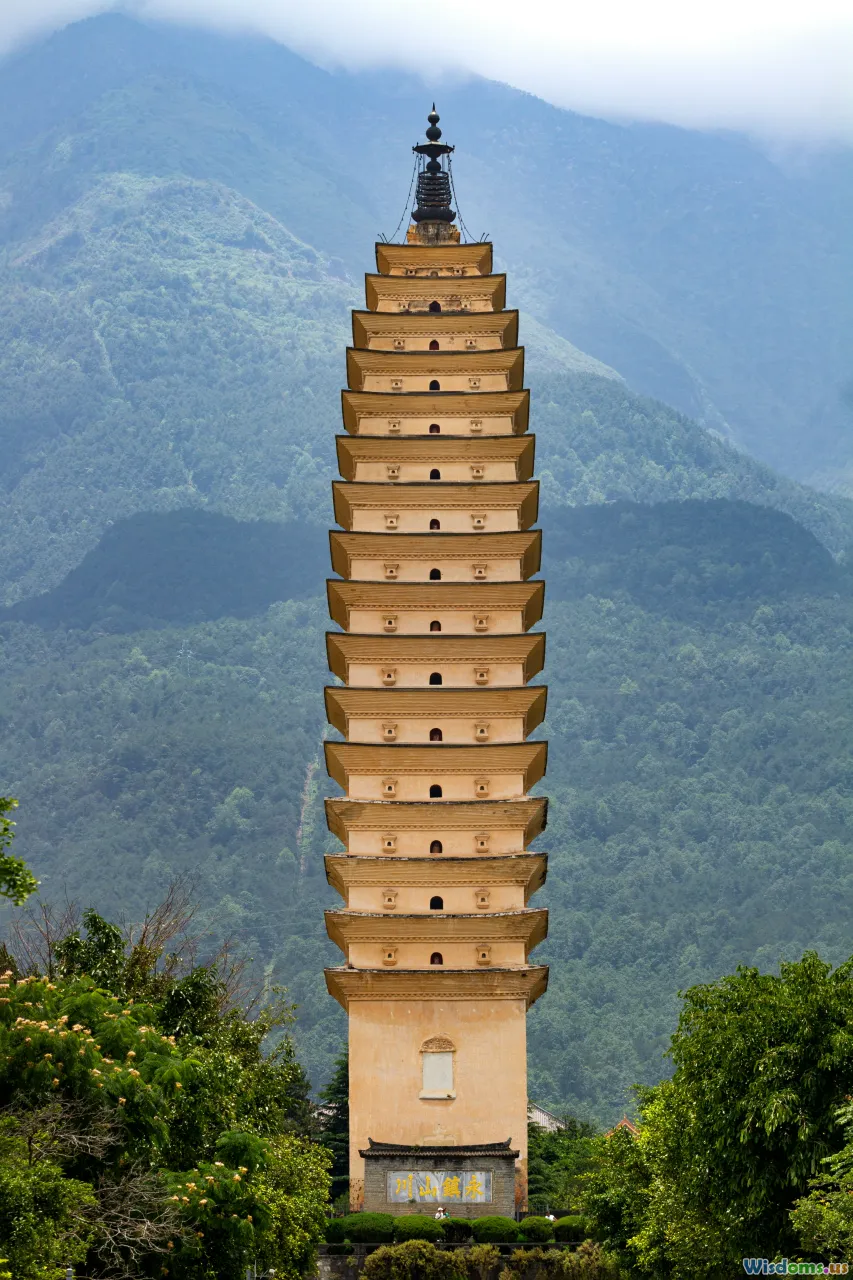
Did you know that monasteries themselves are often designed to mirror the Buddhist cosmology? The very footprint of these sites can encode esoteric teachings in brick and stone.
- Stupas: Found across Asia, these dome-shaped reliquaries are three-dimensional cosmograms. Each layer represents realms of existence—hells below, human experience in the midsection, enlightenment at the apex. Sanchi’s Great Stupa and the Bodhnath in Kathmandu both encode cosmic diagrams in their shapes, stairways, and the orientation of their entry gates (torana).
- Axis Mundi: Central columns or towers often symbolize Mount Meru, the mythic center of the universe. The upper levels house relics or images arranged in ascending spiritual order. Bhutan’s Tashichho Dzong features a spire that invisibly links earth and heaven, transmitting the spiritual potency upward.
- Labyrinthine Paths: Walkways and cloisters encircling main sanctuaries are not mere pragmatic choices, but literal maps of the journey toward enlightenment. As practitioners walk, they symbolically enact the spiritual climb through samsara to ultimate awakening.
Take the architectural layout at Drepung Monastery; its ascending courtyards mimic the steps of the Vajrayana path, where disciples must pass through layers of training and insight.
Animal Allies: Symbolic Creatures Carved and Painted
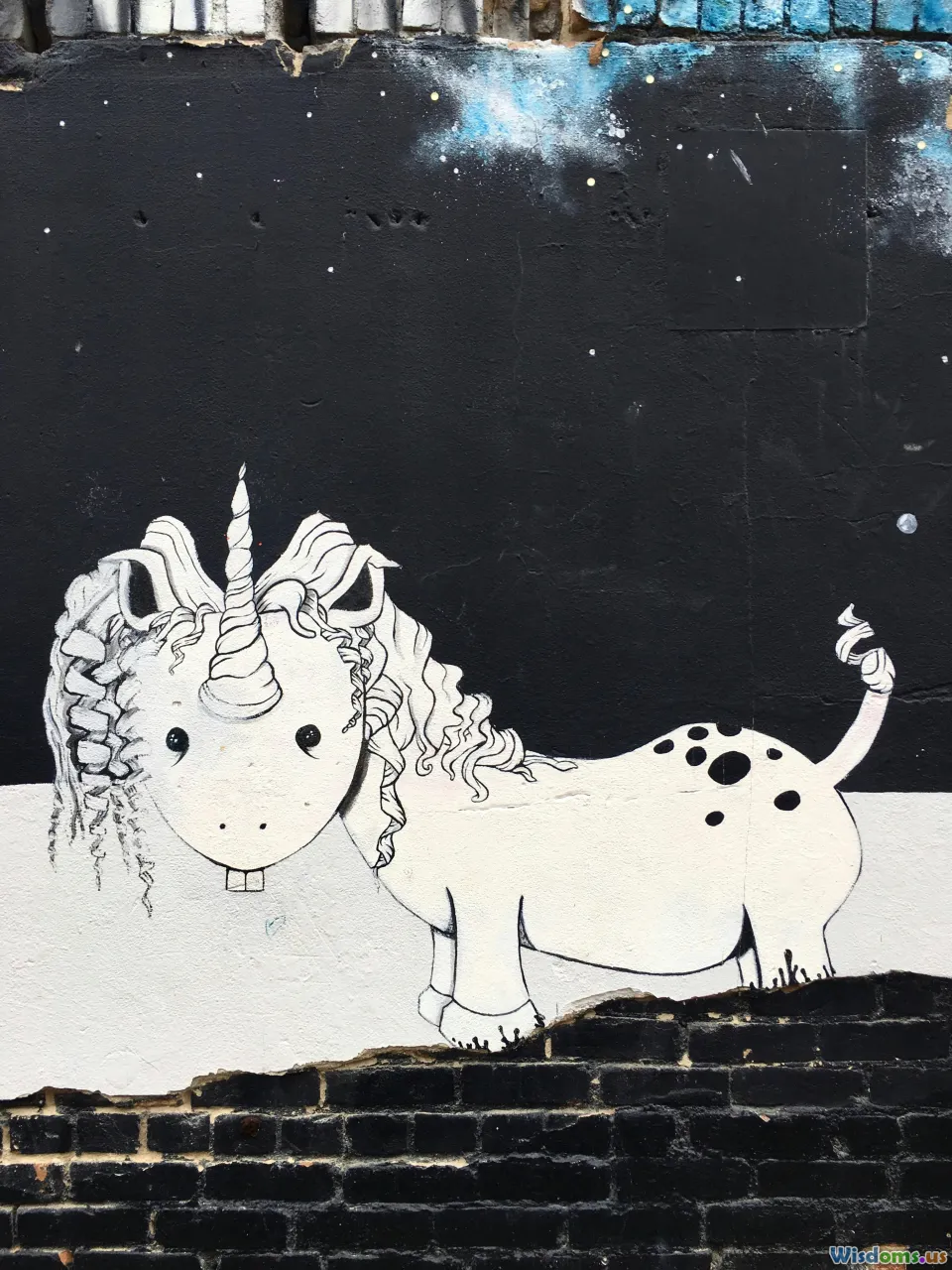
A menagerie of animals—real and mythic—populate monastery rafters, pillars, and tapestries. Viewing these as mere embellishment ignores their deeper purpose.
- Garuda: Often perched at rooftops or altar sides, this mythical bird represents fearlessness and mastery over ignorance; in the Mahayana tradition, it is said to carry prayers upward on its back.
- Dragons: Especially prevalent in Himalayan regions, dragons painted above doorways or eaves symbolize protection and control of rainfall and weather, crucial for the sustenance of monastic life.
- Snow Lion: The national symbol of Tibet, the snow lion personifies joy, energy, and purity of spirit; a pair sits in stylized stone at the gates of places like Tashilhunpo Monastery, signaling an untainted space.
Keep your eyes open for frescoes where rabbits, deer, and bird motifs appear amidst lotuses—each animal scene typically encodes a Jataka tale, old narratives illustrating the Buddha’s former lives and teachings.
Subtle Sounds: Bells, Drums, and Their Symbolic Notes
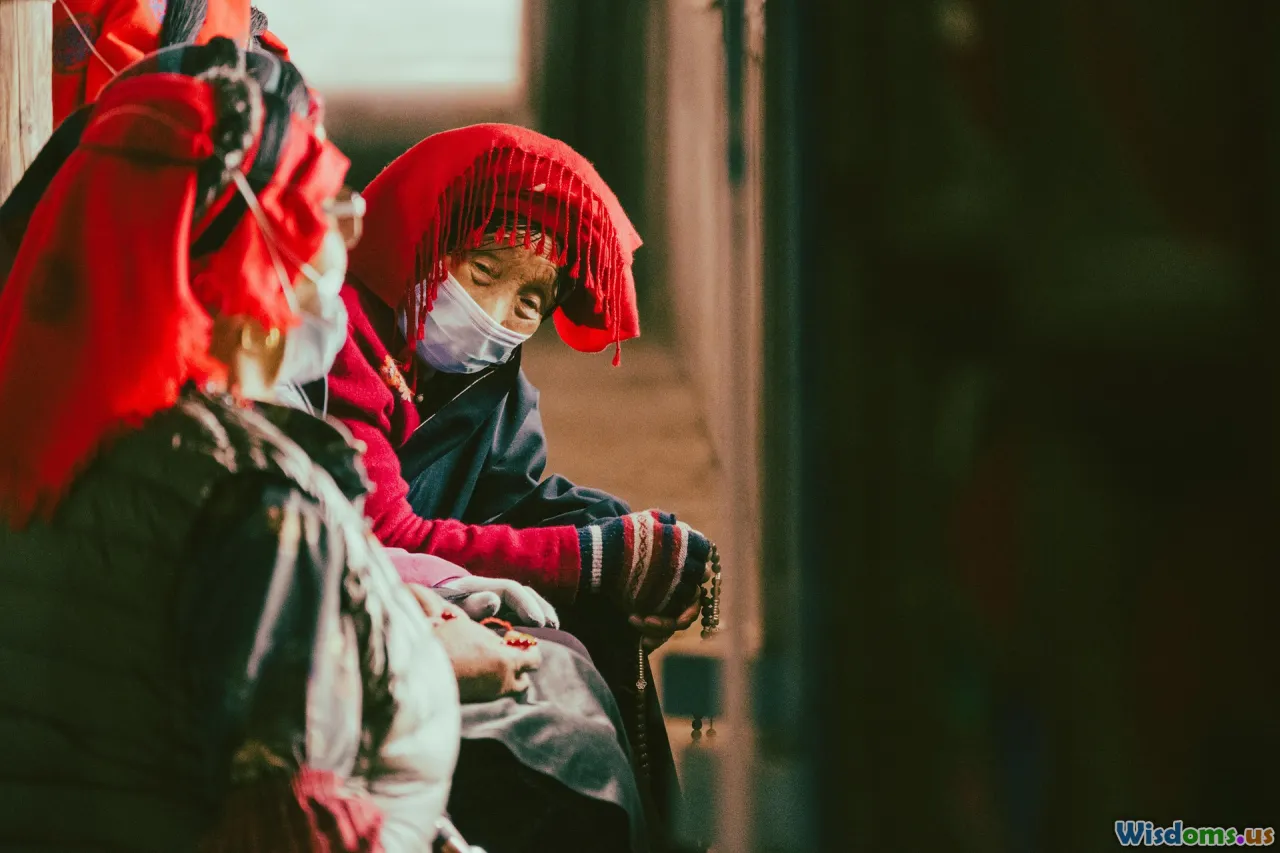
Not all monastery symbols are visible—look behind the soundscape. Certain ritual instruments are carefully chosen to evoke hidden meanings and to awaken both senses and mind:
- Bells (ghanta): Sound the wisdom that cuts through ignorance and invites the invisible force of the dharma. Notices how ceremony always begins with a bell.
- Drums: The double-headed damaru in tantric rituals symbolizes the union of wisdom and method. When played, its rhythm is considered an echo of the cosmic pulse that births consciousness itself.
- Conch Shell Trumpet: Announcing dawn or summoning practitioners for rituals, the conch’s reverberating call is thought to dispel negativity across physical and spiritual realms.
These sound symbols are positioned strategically within monastery complexes. At Hemis Monastery, for instance, the main bell hangs beside the assembly hall door, and its ringing signals the boundary between mundane and sacred worlds—much more than a call to prayer, it’s a symbolic opening of the gate to higher awareness.
Practical Tips: Observing Hidden Symbols on Your Next Visit
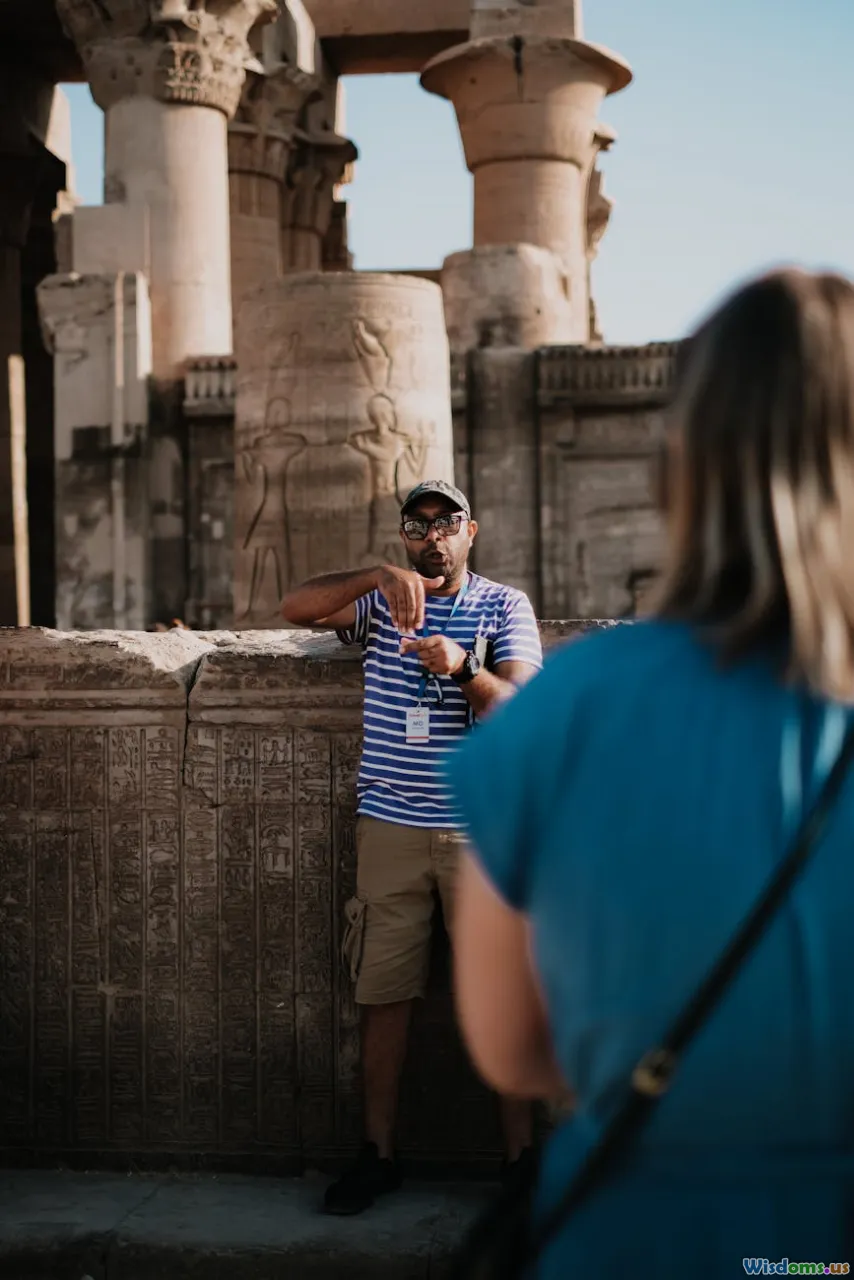
Now that you know what to look for, how can you unearth these secrets yourself?
1. Slow Down and Scan with Intention Don’t rush. Take the time to let your gaze wander from ceiling to floor, pillar to door jamb. Many hidden symbols are crafted for those who pause and notice the details.
2. Ask the Monks or Local Guides Monastic guides, or even practicing monks, are often happy to share stories behind certain symbols—many monasteries now offer cultural tours dedicated to this subject.
3. Sketch or Photograph Jot down or photograph distinct symbols and review them later. Patterns will begin to emerge: look for repeating motifs or seemingly hidden geometric patterns.
4. Research Before and After Armed with just a bit of background (like the meanings of the Eight Auspicious Symbols or common animal allegories), you’ll decipher much more of what’s displayed.
5. Respectful Curiosity Always approach with humility; some areas and images of a monastery are off-limits or require ritual purity. When in doubt, ask before photographing or entering.
A monastery is more than bricks and paint: it is a living code, a poetic oracle, a gallery of mind-training tools disguised as art and architecture. With each image, color, and sound tuned to awaken subtle wisdom, Buddhist monastic spaces teach quietly—but only to those who are prepared to look deeper. When you next step into the cool shadow of a monastery gate or scroll through photos from afar, remember that every detail is an invitation into a mystery both ancient and ever new.
Rate the Post
User Reviews
Popular Posts











